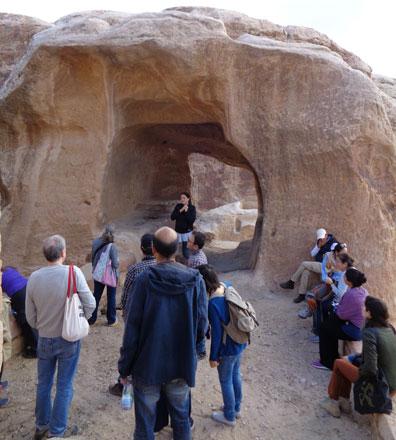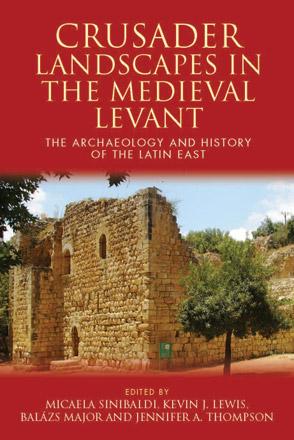You are here
Kingdom's mediaeval history shows 'adaptation, continuity' — scholar
By Saeb Rawashdeh - Feb 23,2016 - Last updated at Feb 23,2016
AMMAN — An expert in Jordan's mediaeval history has challenged popular beliefs about the 12th-century Crusader occupation, arguing that the sparse European presence did not spark radical changes in the area, as well as that the decline of Petra after the Roman era was more gradual than usually assumed.
"Because their numbers in the region of Transjordan were very limited, the Franks [Western European crusaders] went through a process of skillful adaptation to the local environment to be able to hold the new territories," said Micaela Sinibaldi, a recent postdoctoral fellow at Berlin's Humboldt-Universität and Freie Universität.
The scholar told The Jordan Times in a recent interview that patterns of adaptation and continuity were far more important than those of disruption and change during the Crusader occupation in Transjordan, contrary to the widespread but old-fashioned idea that Europeans always brought about deep changes when they settled in the Near East.
Unlike other archaeologists and historians, who maintain that the Crusades had a significant impact on Transjordan and Petra, Sinibaldi said there were actually very few Franks in Transjordan compared to other areas of the Near East, to the extent that they had to use local Christians to hold many of their castles.
However, they did establish "fortified sites which were to survive to our days", such as the castles of Karak and Shawbak, which were "re-fortified in time through the whole Islamic period, mainly the Ayyubid and Mamluk periods" on account of their strategic locations.
She noted that the agricultural conditions in areas near the Petra Valley and the presence of a local Christian population were among the main reasons why the Franks chose to settle in Petra, some 235km south of Amman, and other areas in southern Jordan.
Sinibaldi, who is planning to publish two books on archaeology in the region, also challenged the "popular belief, often found in magazine articles and guidebooks, that the whole Petra region was completely abandoned after the Byzantine period, apart from a short parenthesis during the Crusader period".
"The current scholarly understanding is that Petra lost its leading role after the Roman period... and it is clear from archaeological research that settlement in the Petra Valley gradually diminished over the later periods," she acknowledged.
However, the researcher stressed that "settlement has never stopped existing in Petra", arguing that "the commonly held idea of a complete abandonment of the Petra Valley has been created on the basis of the almost complete lack of studies of ceramics of the Islamic period".
The expert explained that the lack of surviving buildings from this historical phase, due to people making use of already-built structures, as well as the "remarkable prosperity" of Petra in earlier eras, caused scholars to overlook habitation in the early Islamic periods.
Sinibaldi, an Italian archaeologist, came to Jordan for the first time as a student in 1994 and has spent long periods in the Kingdom ever since doing fieldwork.
She has obtained a PhD from the UK's Cardiff University on the subject of Transjordan in the Crusader period.
Her other main research interest is the Petra region during the Islamic and mediaeval eras, historical phases she sees as neglected compared to earlier periods.
The scholar plans to publish two books this year. One of them is the result of her PhD research, under the title "Settlement in Crusader Transjordan, 1100-1189". The other is a collection of essays she is co-editing on the Crusader period in the Levant.
"I am also planning several presentations on my current research and more fieldwork in Petra for the newly launched Islamic Bayda Project, which I direct," Sinibaldi concluded.
The Islamic Bayda Project, begun in 2014, involves the excavation of an Islamic-period agricultural village near Petra.
Related Articles
AMMAN — A group of 10 foreign archaeologists recently concluded a tour of little-known Crusader-era sites in Jordan to learn more about the
KARAK — By analysing the architecture and historical documentation, it is possible to reconstruct a detailed history of the Karak Castle dur
AMMAN — Academics have often relied on “old-fashioned views” when it comes to understanding the Crusader period, and these views have also a














